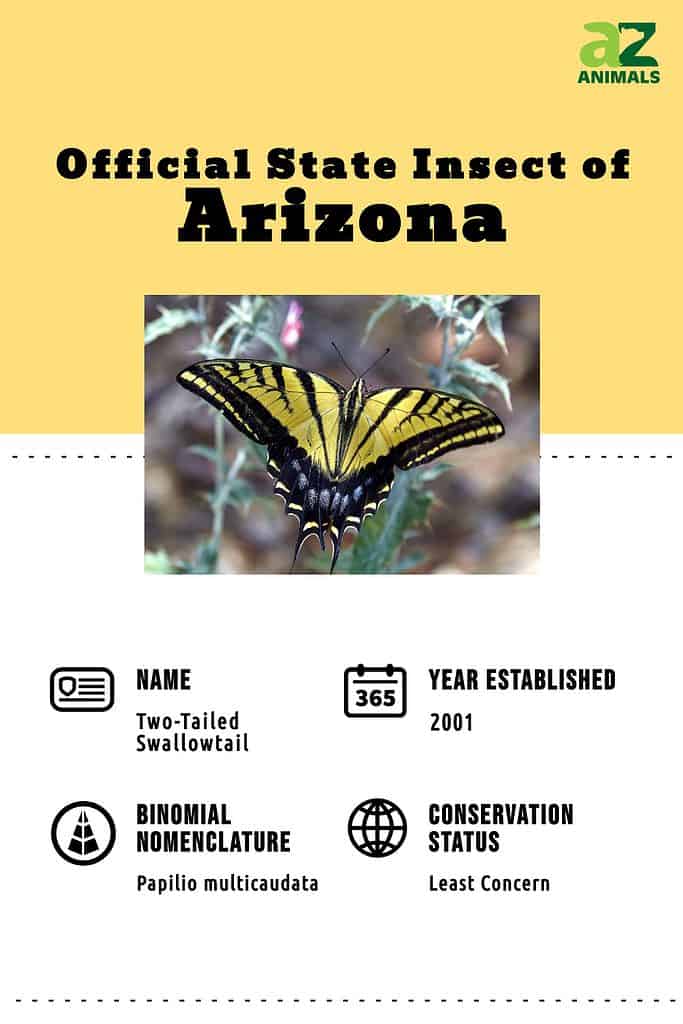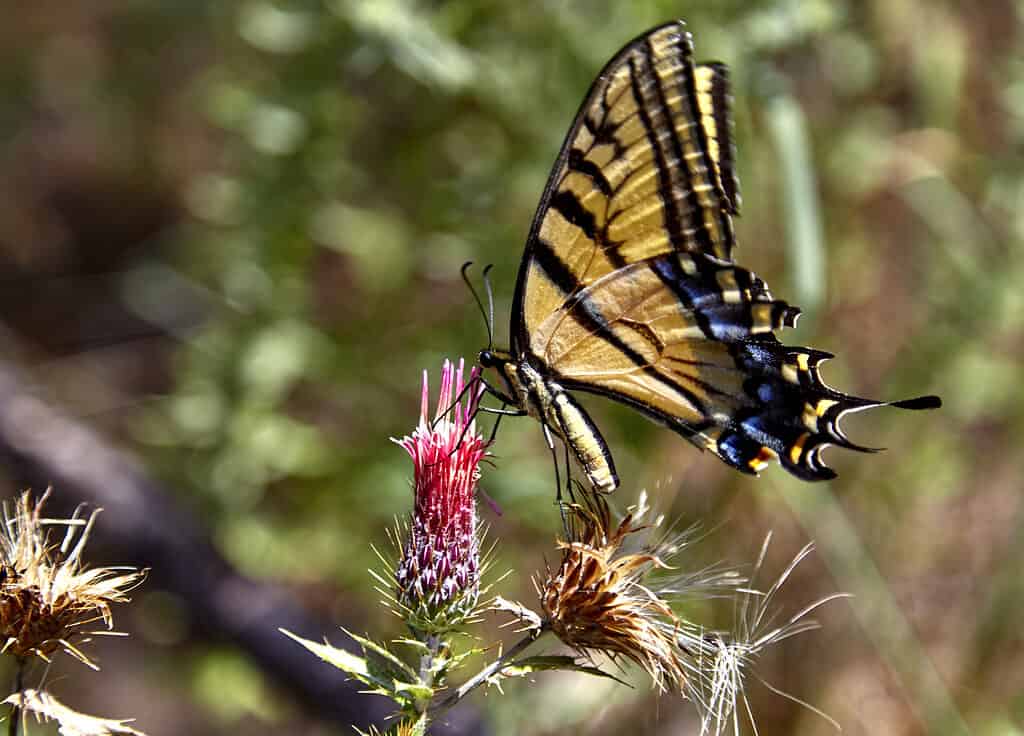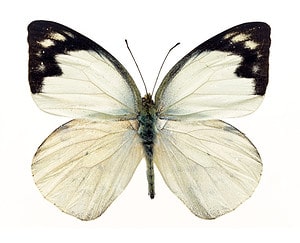The Grand Canyon, Arizona’s most recognizable feature, is the state’s most well-known and current official moniker, “The Grand Canyon State.” Arizona is also referred to as the “Copper State,” which indicates the state’s wealth in this mineral. National parks, forests, nature reserves, wildlife refuges, and Indian reservations make up around 85% of Arizona’s total land area. But do you know what Arizona’s state insect is?
This state is the location of multiple “sky islands” in the world, which are mountain ranges encircled by plains that are host to a diverse array of species of vegetation and animals. There are a wide variety of animals to spot in this beautiful state – you may even get a glimpse of Arizona’s state insect!
The official Arizona state insect is the Two-Tailed Swallowtail. Let’s talk more about this stunning butterfly and how it earned its place to represent Arizona.

Insect Designation
This fluttering insect is one of the numerous swallowtail species found worldwide, including in the United States, and it was given conservation status in 2001. The bug representing Arizona is a member of a family of butterflies found everywhere in the world, from hot, tropical areas to chilly, northern locations.
The tiger and black swallowtail butterflies are two of the most well-known species of butterflies you will encounter; they are large, gorgeous, and frequently found sipping nectar from flowers in the blazing summer heat. One of the largest butterflies in the United States, the two-tailed swallowtail provides an unforgettable impact when you encounter one feeding in the Arizona sunshine.
Transforming Into a Butterfly
The two-tailed swallowtail larva’s body is a speckled black and white tint, giving them the appearance of bird droppings. As they age, they turn orange-brown or brilliant green and develop characteristic eyespot patterns behind the head, close to the thorax.
Adults first appear in May and June and can still be spotted flying into August. They usually visit flowers and can be observed feeding on nectar. Eggs are deposited individually on the green ash and chokecherry plants that the caterpillar stage feeds on.
They frequently employ this to deceive or confound opponents and predators. The two-tailed swallowtail’s chrysalis is gray-brown in hue and hides in a safe place to blend in with the surroundings.
Identification

Two-tailed swallowtail butterfly has an average wingspan of 3.5 to 5.5 inches.
©Pamela Au/Shutterstock.com
The dorsal portion of both wings of the two-tailed swallowtail has a yellow to orange-yellow base color bordered by broad black borders when the wings are open. Four roughly parallel stripes may be seen on each of the four wings, with the outer band being the smallest.
The secondary wing has a twisted column of purple-blue blotches at the end, followed by a few orange spots or lines. The two-tailed swallowtail’s ventral side exhibits a pattern similar to the ventral side when the wings are folded but in a much softer or paler manner.
Their average wingspan is an impressive 3.5 to 5.5 inches. Another thing that stands out about the two-tailed swallowtail butterfly is its flight pattern. It’s known to fly slowly and erratically.
Two-tailed Swallowtail Habitat
Adults are typically found near water sources, such as rivers and creeks. They consume flower nectar and can be seen flying and on petals. They are active from spring until fall. You can find them in canyons, forests, and anywhere where there is moving water. These beauties can be spotted in western North America, from Central America to British Columbia.
Additional Arizona State Representation
Just like other states in the country, Arizona has plenty of things that properly represent the state. For example, the state bird is the brown cactus wren – Campylorhynchus brunneicapillus. You may notice white lines over each eye if you look closely. They eventually reach 7 to 8 inches, slightly longer than a new pencil.
The white blossom of the saguaro (Carnegiea gigantea), the country’s biggest cactus, serves as Arizona’s state flower. In the months of May and June, the saguaro cactus’ long, pointed arms begin to bloom.
The palo verde tree is Arizona’s official tree (Parkinsonia florida). Palo verde is Spanish for “green stick.” Arizona’s desert and slopes are home to the palo verde. The trees bloom in late April, and they appear to be gold.
Lastly, the state stone is absolutely stunning. Turquoise, the state gemstone of Arizona, is a blue-green stone. These gems are precious stones and are valuable. Native American jewelry has traditionally incorporated it into their designs.
So, whether you’re looking for the state insect, bird, or even neckwear (the bolo tie!), there’s plenty the state of Arizona has to offer both visitors and locals!
The photo featured at the top of this post is © Pamela Au/Shutterstock.com
Thank you for reading! Have some feedback for us? Contact the AZ Animals editorial team.







